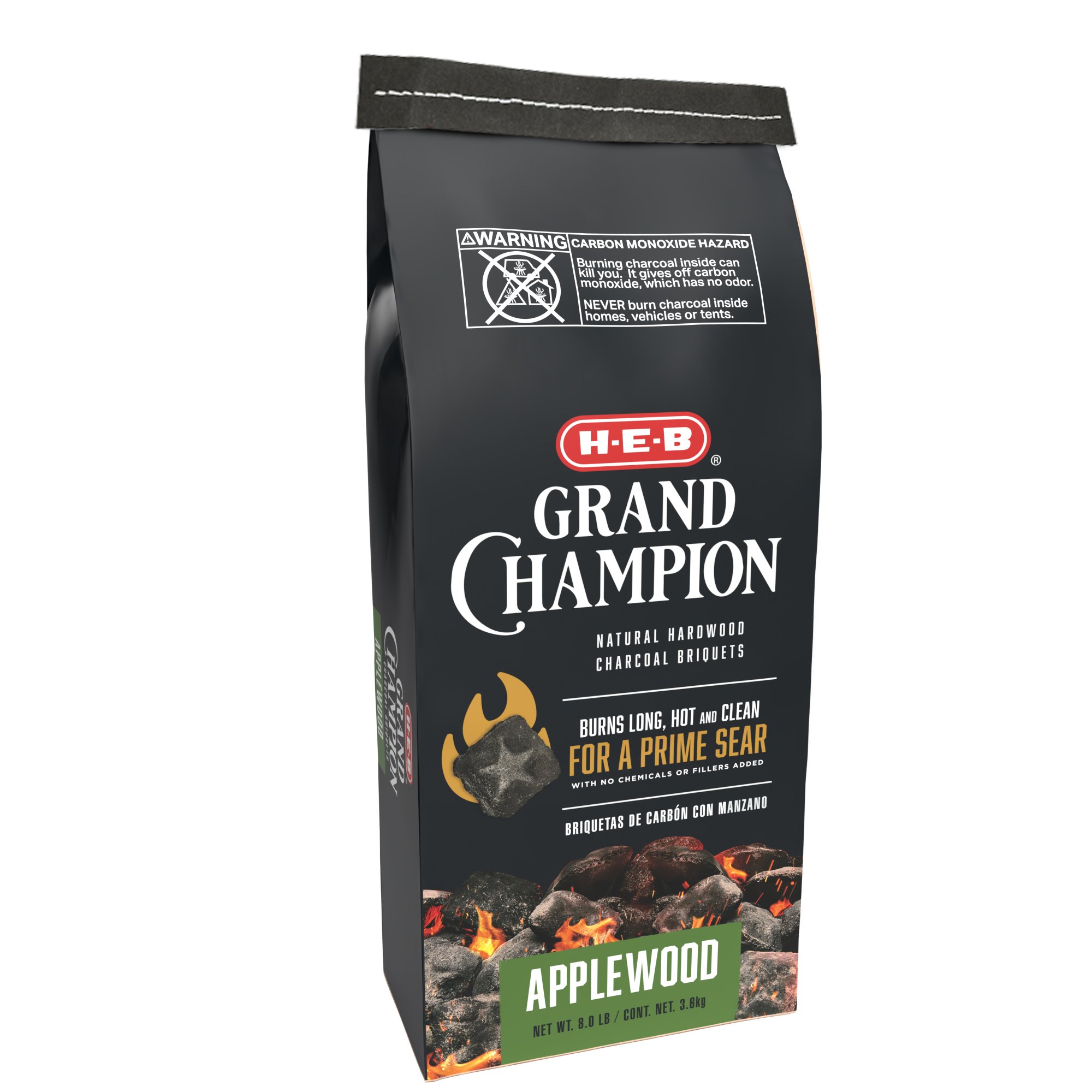Applewood Charcoal Everything You Need to Know for the Perfect Grill
Applewood charcoal is a type of charcoal made from the wood of apple trees. It is renowned for its ability to impart a distinct, sweet, and fruity flavor to grilled and smoked foods, making it a favorite among barbecue enthusiasts and professional chefs alike.

Benefits of Using Applewood Charcoal. The natural infusion of applewood adds a delightful smoky aroma and a subtle sweetness to grilled dishes, elevating your barbecue experience to new heights. The charcoal burns evenly and consistently, delivering reliable heat for perfect grilling results every time.
- 100% Natural Ingredients
- Ready To Cook On In 15 Minutes
- Long Burn Time*
Grilling vs. Smoking: What's the Difference?
Heat and Speed: The Defining Factors
The primary difference between grilling and smoking lies in the approach to heat and cooking time. Grilling operates at high temperatures, typically ranging from 400°F to 550°F. This intense heat sears the exterior of the food quickly, locking in juices and creating a beautiful char. Cooking times for grilled items are generally short, from just a few minutes for thin cuts to around 30 minutes for thicker ones.
Smoking, conversely, embraces a low-and-slow philosophy. Smoking temperatures hover between 125°F and 175°F, ensuring a gradual and gentle cooking process. This extended timeframe, often spanning several hours or even days, allows smoke to permeate the food, infusing it with a unique flavor profile and transforming tougher cuts of meat into melt-in-your-mouth masterpieces.
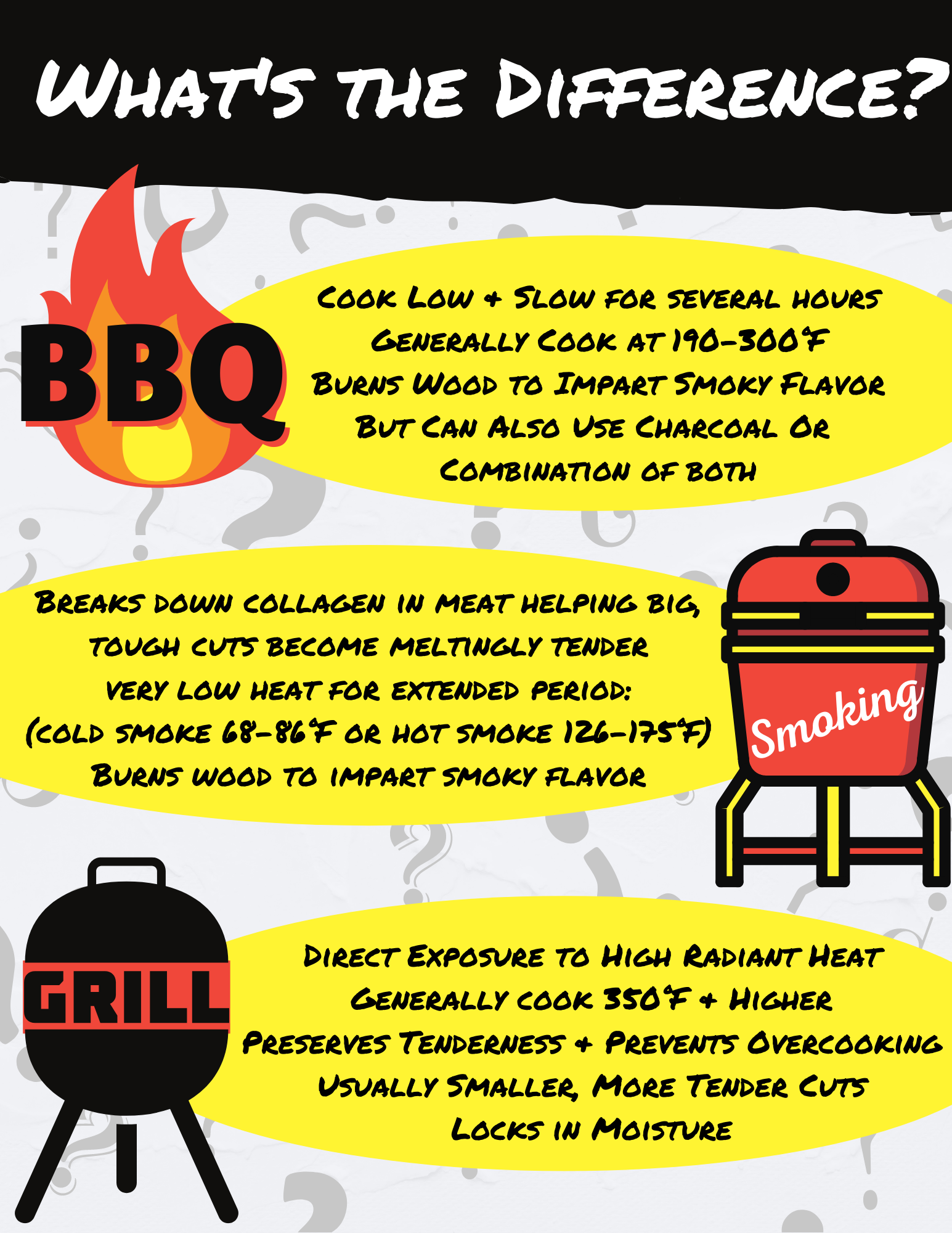
Direct vs. Indirect Heat
Grilling uses direct heat, with the food placed directly over the heat source, whether it be charcoal or gas flames. This direct exposure leads to rapid searing and the development of those coveted grill marks. The Maillard reaction, a chemical process responsible for browning and caramelization, occurs readily at grilling temperatures. This reaction not only enhances the visual appeal of grilled food but also deepens its flavor profile.
Smoking employs indirect heat, with the food positioned within an enclosed smoker, not directly over the heat source. Smoke generated from wood chips or pellets fills the chamber, gently cooking and flavoring the food. This indirect approach prevents burning and allows for longer cooking times without drying out the food.
Choosing Your Equipment: Grill vs. Smoker
Grills:
- Gas Grills: Offer convenience and precise temperature control, making them ideal for beginners.
- Charcoal Grills: Require some practice to manage charcoal levels and achieve the desired temperature but reward patient grillers with a smoky flavor unmatched by gas.
- Electric Grills: Offer a clean and smokeless alternative.
Smokers:
- Charcoal Smokers: Require similar management to charcoal grills but deliver exceptional smoky flavor.
- Electric Smokers: Provide a more hands-off approach.
- Pellet Smokers: Offer the ultimate convenience with automated temperature control and fuel feeding.
Grilling vs. Smoking: Best Uses
Grilling: This method excels with thin cuts of meat like steaks, burgers, and chicken breasts. It's also perfect for seafood like fish fillets, skewers, and kabobs. Vegetables like asparagus, zucchini, and bell peppers can be quickly grilled for a smoky char.
Smoking: Smokers are ideal for tougher cuts of meat like brisket, pork shoulder, and ribs. The low-and-slow approach allows these cuts to break down and become incredibly tender. Whole chickens, turkeys, and even salmon can be smoked for a unique and flavorful twist.
Beyond the Basics: Advanced Techniques
Grilling:
- Searing
- Reverse searing
- Indirect grilling over lower heat
Smoking:
- Hot smoking at slightly higher temperatures (around 225°F) for faster smoking times.
- Cold smoking at even lower temperatures (around 68°F to 80°F), ideal for preserving fish like salmon.
The Art of Smoke: Wood Selection
Wood selection plays a significant role in smoking. Different woods impart distinct flavor profiles. Hickory provides a strong, robust smoke, while mesquite offers a bolder, more peppery flavor. Fruity woods like apple and cherry add a touch of sweetness, well-suited for poultry and pork. Experimenting with different wood combinations allows you to tailor the smoke flavor to your preferences.
Types of Applewood Charcoal
There are two main types of applewood charcoal: lump charcoal and briquettes. Each offers distinct advantages depending on your grilling or smoking preferences.
1. Applewood Lump Charcoal
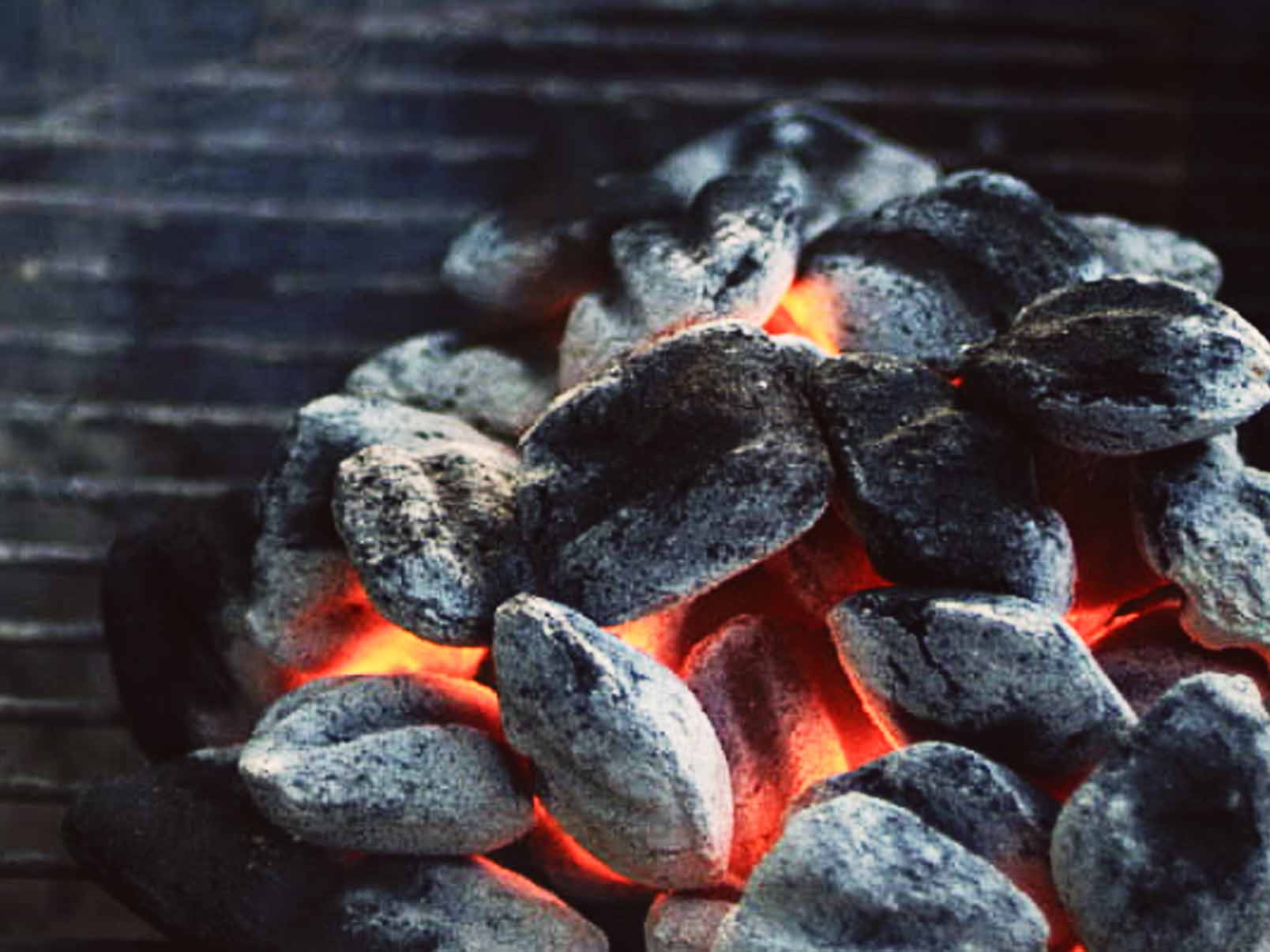
- Description: Applewood lump charcoal consists of large, irregular pieces of hardwood charcoal made from burnt applewood.
- Benefits:
- Burns hotter and faster than briquettes, ideal for searing steaks.
- Provides a stronger smoke flavor due to its larger surface area.
- Less likely to contain additives or fillers.
- Drawbacks:
- Takes longer to light and requires more attention to maintain consistent heat.
- Can be more expensive than briquettes.
2. Applewood Charcoal Briquettes
- Description: Applewood charcoal briquettes are uniform pieces of charcoal made from compressed charcoal dust and sometimes wood binders. They often contain a blend of applewood and other hardwoods.
- Benefits:
- Easier to light and maintain consistent heat compared to lump charcoal.
- Generally more affordable than lump charcoal.
- Longer burning time than lump charcoal.
- Drawbacks:
- Burns at a slightly lower temperature than lump charcoal.
- May contain fillers or additives that can affect the flavor.
- Might not impart as strong of a smoke flavor as lump charcoal.
Choosing the Right Applewood Charcoal
The best type of applewood charcoal for you depends on your grilling or smoking needs. Here's a quick guide:
- For searing steaks and high-heat grilling, choose lump charcoal.
- For smoking and low and slow cooking, briquettes are a good option due to their longer burn time.
- If a strong smoke flavor is your priority, lump charcoal is the way to go.
- For convenience and ease of use, briquettes are a better choice.
No matter which type you choose, applewood charcoal is sure to elevate your grilling and smoking experience with its delicious, fruity smoke flavor.
Best Applewood Charcoal Brands
B&B Competition Char-Logs ($19.99/30 lbs):

- Unique briquette logs: Shaped like thick pool noodle slices with a hole, these are built for long, slow cooks like smoking, not quick grilling.
- Long ignition time: Took 40 minutes to reach 450-500 degrees.
- Limited flavor impact: Didn't add much charcoal flavor to the steak.
- Strength: Holds high heat for extended periods, perfect for competition-style low-and-slow cooking.
- Rating: Average
H-E-B Grand Champion Applewood ($4.48/8 lbs):
- Texas twist: An applewood charcoal option, a less common flavor in Texas.
- Sweet smoke: Produces a sweet, smoky finish, ideal for pork dishes.
- Fast heating: Reached 500 degrees in 20 minutes.
- Flavor champion: Didn't overpower the natural beef flavor, allowing it to shine through.
- Winner: Grill On (and overall winner)
Jack Daniel's Charcoal ($4.98/4 lbs):

- Gimmicky appeal: Bag resembles the whiskey label and claims white oak barrel wood infusion for added flavor.
- Heat failure: Couldn't reach past 325 degrees even after an hour.
- Flavor flop: No detectable whiskey taste.
- Barrel wood blues: Barrel wood pieces burned too quickly to impart any significant flavor.
- Rating: Bag It (avoid this one)
Kingsford Original ($6.99/8 lbs):
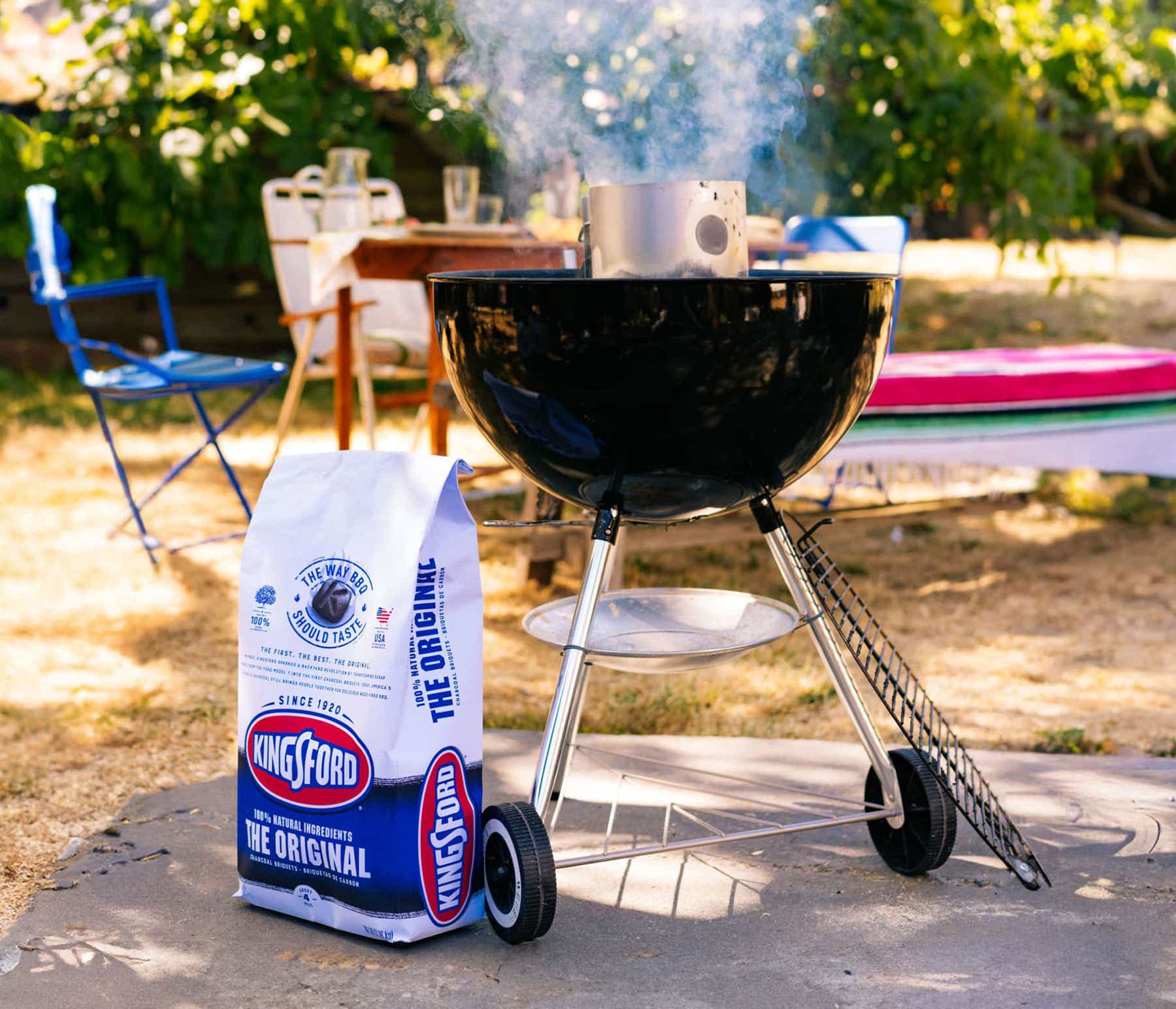
- The grilling OG: A classic charcoal brand around for over 100 years.
- Fast and nostalgic: Heats up quickly (500 degrees in 15 minutes) with a familiar grilling aroma.
- Grilling champ: Performed well with the steak and is versatile for various grilling needs.
- Drawback: Briquettes burn quickly and produce a lot of ash, requiring refills for longer cooks.
- Rating: Average
Royal Oak Hardwood Lump ($7.98/8 lbs):
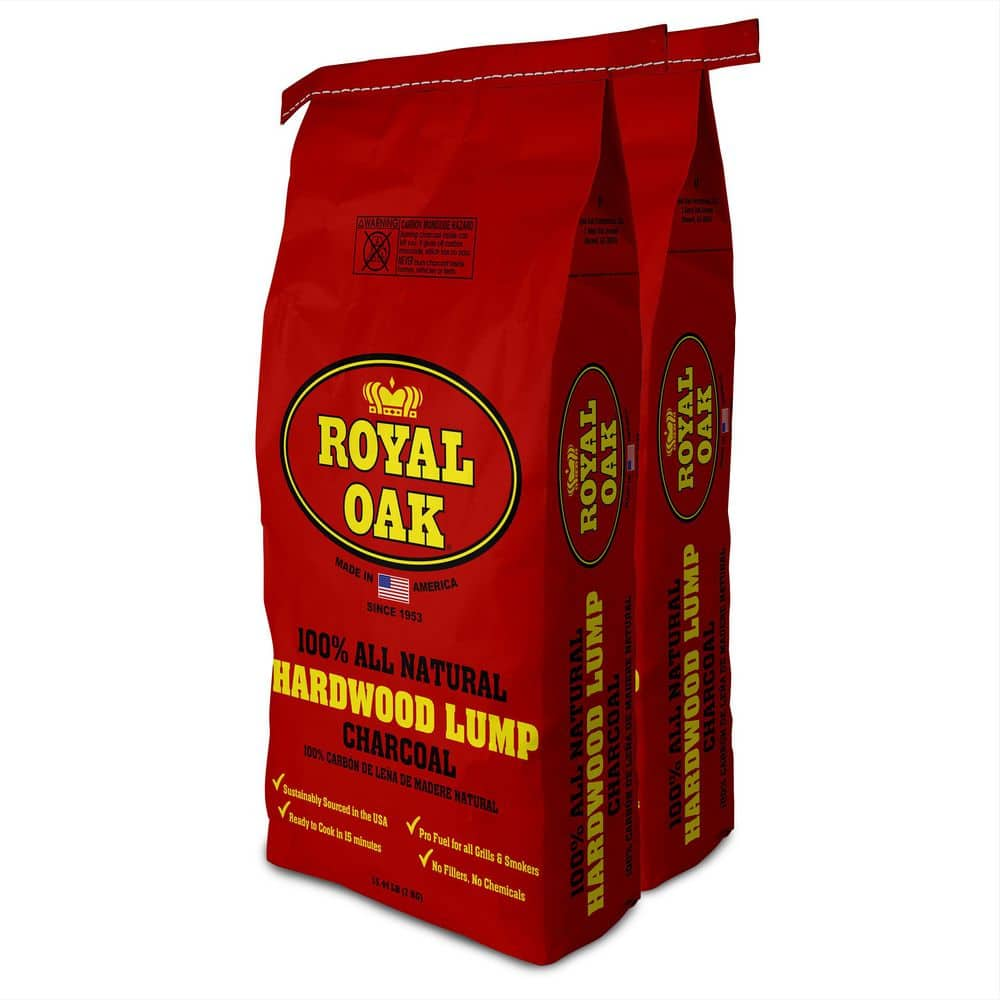
- Mixed hardwood blend: Oak, maple, hickory, and other woods in various sizes (golf ball to Coke bottle).
- Quick heat-up: Reached 475 degrees in 20 minutes.
- Long burn: Maintained temperature for over an hour.
- Clean burning: Produced minimal ash, making it suitable for "S" searing (direct heat on the coals).
- Flavor neutrality: Didn't add a strong wood flavor to the steak.
- Rating: Average
Viva Pancho Mesquite Charcoal ($5.39/8 lbs):

- South of the border heat: Made in Mexico, this pure mesquite charcoal burns hot and fast.
- Fiery start: Reached 500 degrees in 20 minutes.
- Steady performer: Held a temperature of at least 400 degrees for over an hour.
- Smoke show: Produces heavy smoke, leaving a strong flavor on the griller.
- Flavor win: Delivered a delicious steak with a sweet and smoky bite.
- Rating: Grill On (but not ideal for long cooks due to strong smoke)

